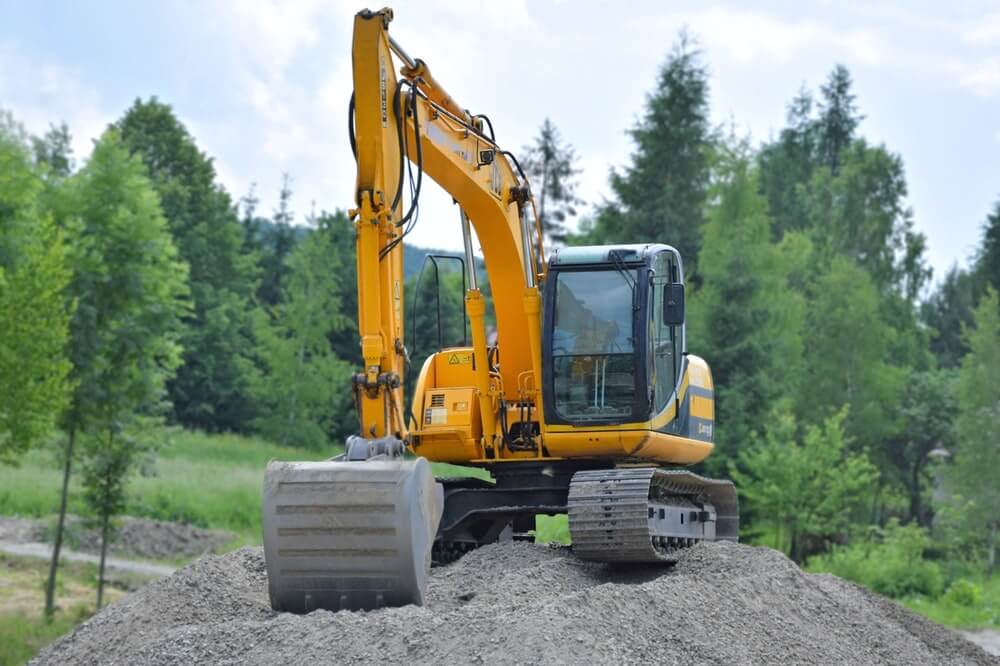Ready, Set, Go Green – Ways to Reduce Environmental Impact of Excavation

As humanity continues to expand its towns and cities for the increasing number of people populating the planet, more sustainable actions are becoming a priority. Our existence depends on the earth, and we’ve come to a tipping point. As such, communities, governments, scientists, and the general public are rising up in search of new ways to sustain the earth and our use of it.
The truth of this influences all industries across the globe, including construction. Almost every construction site typically involves excavation work, and this subject has been a hot topic of debate in terms of sustainability and environmental impact.
Increasing efficiency when building and finding better ways of using energy and resources is now more important than ever for companies worldwide. Construction industry leaders are required to find solutions for their projects to be competitive.
As the public and governments act more favourably towards environmentally-responsible companies, industries are shifting towards better use of resources.
The Issue of Sustainability and Excavation
One of the most efficient and simple ideas to make excavations more sustainable is to use the excavated dirt in other ways instead of transporting it to a landfill and dumping it there. Companies have been finding all kinds of solutions for dirt, rocks, and other debris. New technology is creating modern types of cement and concrete, using stones for landscaping and by-products, etc.
Here are some of the ways excavation work can be made more sustainable:
Sustainable concrete
Concrete is a material that companies use a lot in construction work. It usually contains water, cement, and a filler like sand. Soil and clay obtained during excavations can be used instead of the sand, making it easy to mix concrete and use on-site.
In recent times, industrial scientists in Singapore have created a more durable, more sustainable type of concrete using clay removed after excavations from construction sites. Repurposed clay has replaced half of the costly sand powder.
Landscaping
In small to large projects with the proper planning, debris can be used for landscaping, creating hills and elements that are decorative, functional, or both. One of the simplest ways to do this is by using dirt that excavators have extracted to build a pond and create a hill structure nearby, adding back natural beauty to a landscape.
Soil Cleansing and Treatment
If the soil removed during excavations is contaminated, constructors can use specialized methods to treat it and remove the contaminants. By doing this, they ensure the soil can be reused, preferably on-site, instead of being moved around and abandoned at the landfill, contributing to more waste.
Reusing stones
Besides soil, stones and rock are also a by-product of excavations. Most of the time, stones have to be removed, as they can unbalance the terrain. They can, however, be repurposed on the site or transported to companies using rocks for their products. Even homeowners can make use of these rocks landscaping and DIY projects too.
Dig, Don’t Fill
Transporting excavated soil to landfills and dumping it as just another by-product is not sustainable. Transportation alone to the landfill requires energy and also uses up natural resources unnecessarily. Even with that in mind, a lot of reusable soil is abandoned in such sites.
Additionally, sometimes the soil is contaminated by toxic substances and is deemed to be dangerous to humans or the environment. These products do need to be handled and disposed of safely.
That being said, landfills hurt the economy, the environment, and human health. They leak methane gas, which contributes to global warming, and leachate, a toxic liquid waste that infiltrates water sources. A big landfill can impact numerous micro-ecosystems around it, making the surroundings unfit for living or unbalanced and prone to problems.
The negative consequences of landfills can go on and on. It is why every effort to reduce the amount of waste that gets dumped in landfills is vital.
Dig the Green
Construction firms have started to take numerous actions to make the construction sector greener. Giants in the industry have adopted sustainable strategies. By doing this, they’ve begun to lead the way towards more established regulations and smarter, green-focused methods of building.
Most construction companies review environmental impact assessments before they dig. This is because government regulations have tightened in most countries in the past decades. Specialists determine how the environment is affected after an operation or how dangerous it is for humans or nature.
Waste management is also important in securing sustainable operations. The less waste gets in landfills, the closer builders are to the goal of reducing emissions and the impact on the environment.
Amongst the initiatives that firms have had, reducing carbon emissions and energy use have been essential. In addition, excavation protocols, recycling materials when possible, and more advanced assessments are applied towards the same goal. The latest excavation equipment is also more efficient, faster, and built to reduce the time it takes to dig construction sites and move materials.
Building Greener, Building Smarter
Construction firms continuously evaluate the impact each project has on the environment. Based on that, they set up standards for keeping it green. Excess soil is being reused on-site or sent to another construction site. Many vehicles use green fuel or electricity and get used only when they are needed.
Creating a collective mindset focused on sustainability is important for the future of our planet, and for supporting smart buildings and structures. Naturally, the economic factor is incredibly vital in how firms decide to act further, but pollution is just as costly in the long term.
Here at TFR Construction, we adopt a responsible approach in our excavation work and are eager to apply the latest, most efficient, and innovative methods to reduce waste and build sustainably. Contact us for expert, responsible site preparation or other projects.
Recent Posts
A Parcel for the Picking – Things to Consider When Buying Land for Your Home
Selecting the proper parcel of land might be challenging but approaching the task with the correct knowledge makes it worthwhile.
Stone Landscaping: Adding Statement Stone and Boulders to Your Landscape
Stone landscaping is low maintenance, sustainable, and extremely versatile. Here is a realistic view of the main pros and cons of stone landscaping.
5 Ways to Beautify Your Sleeper Retaining Walls
In this blog post, we examine how you can combine looks and function with the latest designs of retaining walls available today.
How Sleeper Retaining Walls Can Help with Property Water Drainage Systems
We take a closer look at why retaining walls can be a fantastic solution for redirecting water around the house and protecting your foundation.
What Is a Commercial Contractor?
Contractors who work on commercial buildings have the know-how, expertise, and certifications to handle commercial construction work. But what exactly is a commercial contractor, and do you need one for your next project? Read on to find out if a commercial contractor is right for you.
Recent Posts
A Parcel for the Picking – Things to Consider When Buying Land for Your Home
Selecting the proper parcel of land might be challenging but approaching the task with the correct knowledge makes it worthwhile.
Stone Landscaping: Adding Statement Stone and Boulders to Your Landscape
Stone landscaping is low maintenance, sustainable, and extremely versatile. Here is a realistic view of the main pros and cons of stone landscaping.
5 Ways to Beautify Your Sleeper Retaining Walls
In this blog post, we examine how you can combine looks and function with the latest designs of retaining walls available today.
How Sleeper Retaining Walls Can Help with Property Water Drainage Systems
We take a closer look at why retaining walls can be a fantastic solution for redirecting water around the house and protecting your foundation.
What Is a Commercial Contractor?
Contractors who work on commercial buildings have the know-how, expertise, and certifications to handle commercial construction work. But what exactly is a commercial contractor, and do you need one for your next project? Read on to find out if a commercial contractor is right for you.





